This past Sunday I had the opportunity to test drive the new Volkswagen ID.4 as part of the company’s “ID.4 Experience Roadshow” test drives currently underway in California, and ultimately reaching 21 states.
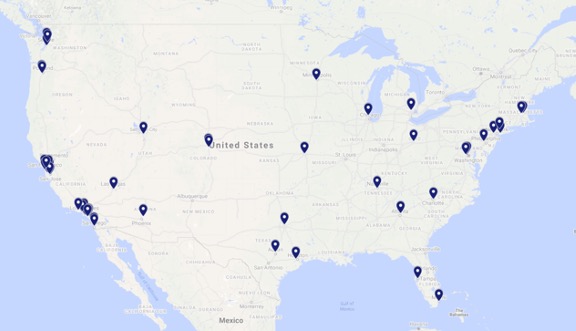
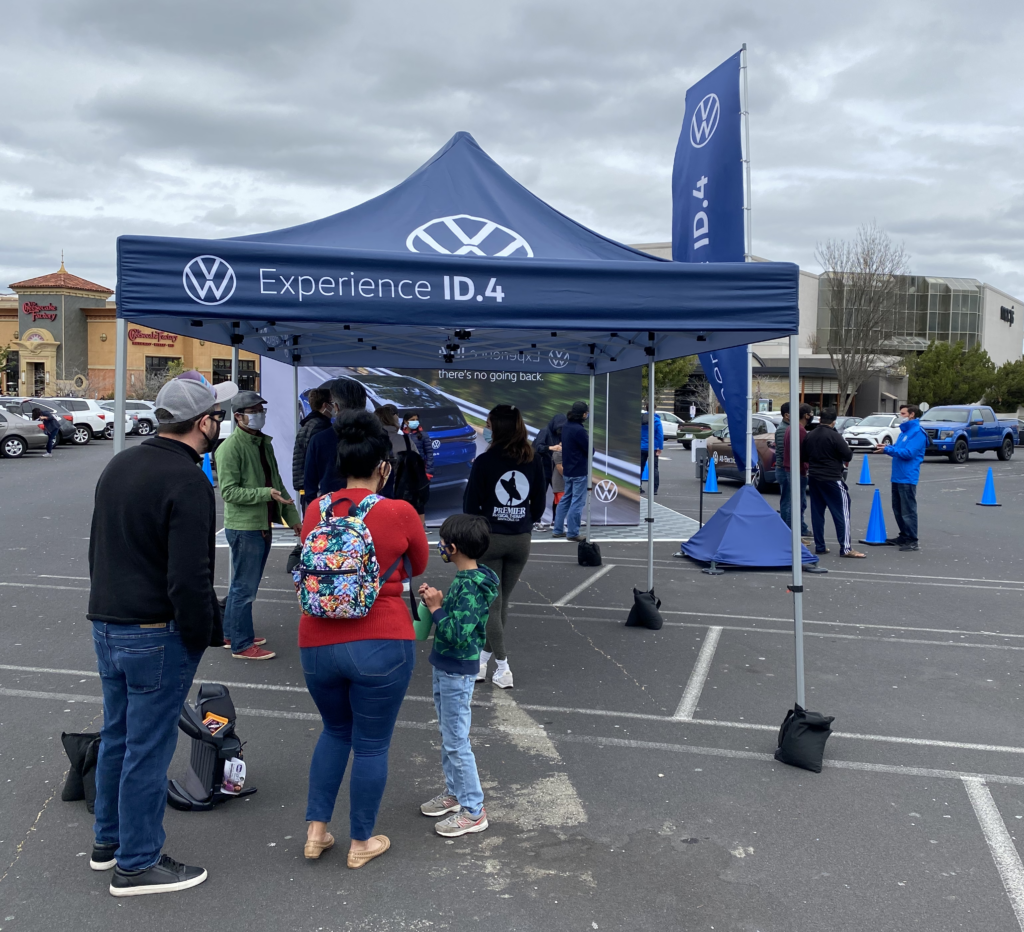
This article is not going to be a review of the ID.4 (though I will share my brief reactions at the end). Test drives are not the focus, interest, nor expertise of EVAdoption, and wouldn’t be completely fair regardless with only a five minute test drive on streets around the shopping mall and literally only driving on and off two freeways and back into the mall parking lot.
Rather, this article will focus on what happened as I was about to leave the test drive area. The test drives were scheduled by advance reservation (with many time slots full), but a man walked up and asked the VW test drive associate if he could do a test drive. After being told yes and that he’d need to sign up, the man asked a very logical and common question around EVs: “How much range does it have?”
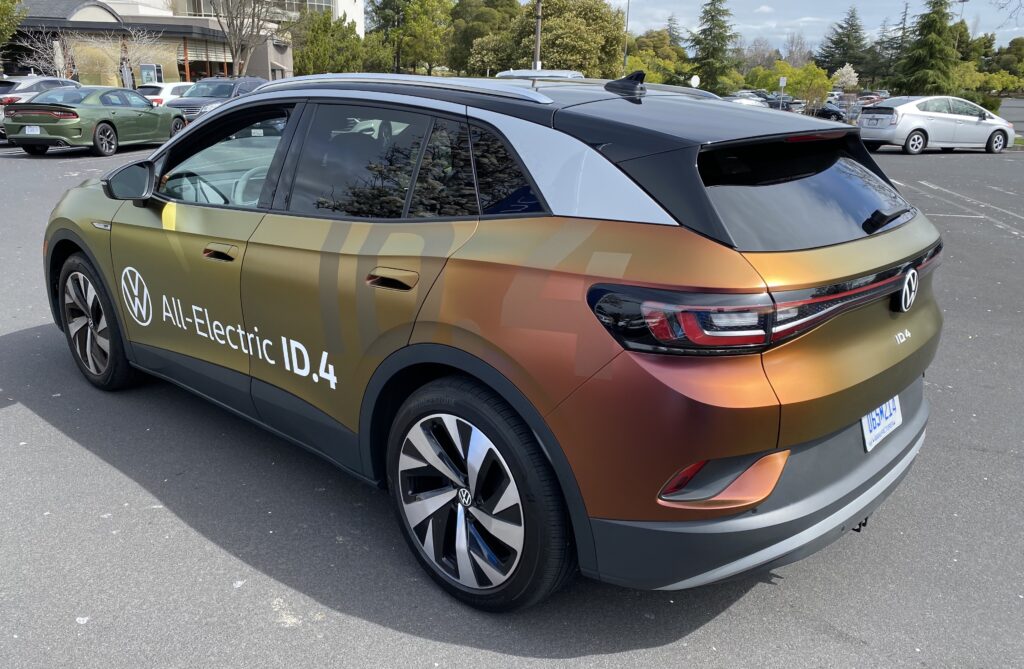
The VW test drives staffer responded, “250 miles.” The guest responded with a question, but almost in the form of a statement: “Tesla has 500 miles, right?”
The VW staff person kind of mumbled and explained that yes, “Teslas have more range.” I wanted to jump in and offer a more detailed explanation than the staffer (but I decided to just observe) and explain that the comparable Model Y from Tesla had variations that with range options of 303 and 326 miles. But the ID.4 Pro at $40,000 and 250 miles of range compares quite well to the Tesla Model Y Long Range at $50,000 with 326 miles of range.
And if you subtract the $7,500 federal EV tax credit available for the ID.4, but not for the Model Y – the ID.4 Pro is available for ~$17,500 lower than the Model Y with its 76 more miles of range. For many buyers, that savings amount is significant and a great tradeoff for not having 300+ miles of range. (Note: The Tesla Model Y Standard Range that had 250 miles of range and was priced at $40,000, is no longer being produced.)
The gentleman then asked if the ID.4 had auto pilot? I don’t remember the exact response from the VW staffer, but it was something about that the VW comes with Adaptive Cruise Control and several other advanced driver assistance features.
While responding to both questions you could almost feel the VW staffer (not an actual VW employee but an employee of an events company subcontractor to VW) roll his eyes and that he was tired of answering these and similar Tesla-centric questions. But it doesn’t have to be this way and while this was just one example, there are hundreds of stories of similar exchanges at legacy auto dealerships.
6 Steps Legacy Automakers Needs to Take to Counter The Tesla Narrative
The Tesla brand is of course synonymous with electric vehicles having made them cool and aspirational beginning in 2012 with the Model S. Tesla built its image and leadership through neck-snapping acceleration, 300-400+ miles of range, its own fast charging and Level 2 charging networks, over-the-air (OTA) software updates, showrooms, a direct sales model, mobile service, semi-autonomous driving features, and of course the social media presence of CEO Elon Musk.
And while EVs from the legacy automakers as of yet don’t match the range and performance of those from Tesla, those and other advantages from Tesla are simply not as important to huge segments of car buyers. Following are a few steps legacy automakers and dealers (that are actually trying to sell EVs) need to do to help counter the Tesla narrative that has created various expectations by consumers when considering an EV.
1. Dealer Training: There are countless stories and secret shopper studies that reveal that many dealers and their sales people are either not educated about EVs, or simply would rather not even try and sell them. The reality is most potential EV buyers have done their research in advance of visiting a dealer and have an idea if an EV is right for them. But the automakers and dealers need to invest in something like an “EV University” that would train sales people not only on how to educate buyers about EVs and especially the EV charging process – but how to counter Tesla comparisons.
2. Butts in Seats: It is well known that the best way to sell a consumer an EV is to have them drive one – the “butts in seat” approach. I commend Volkswagen for their ID.4 Experience Roadshow. At the location where I did my short drive (that had 5 straight days of test drives), a staffer told me that they did 160 drives a few days earlier. That means they probably reached around 750 households in a controlled environment in just one city over a few days.
Other automakers that are actually serious about selling EVs need to do similar roadshows, but execute the program a bit better, including:
- Have a display with looping videos that educate consumers on range needs and charging. Portland-based Chargeway has a beacon display solution designed just for this purpose.
- Have a 240 volt outlet on a stand with a mobile connector to show potential buyers how easy it is to add Level 2 charging to their home through the same outlet or wiring that their washer and dryer plug into.
- Make the event more compelling and experiential. Granted I’m spoiled from the “Taste of Lexus” events my family used to attend and even the old Tesla meet-up events. But in my case, my 1:30 test drive didn’t actually start until after 2 pm and for the 30 minutes I waited I just stood their, though occasionally interacting with staff. They offered no water, no snacks, there was zero swag. I literally had 5 minutes to drive the ID.4, and perhaps 10 minutes total with the car when including inspecting it and chatting with a staffer. While I didn’t expect a 5-star meal, they could have brought in a local food truck and serve snacks and beverages. The event was not a stellar customer or experiential experience, and rated only a C- level of effort in my book.
3. Consumer Education: The VW site and many others often have decent educational resources about EVs and charging, but these efforts need to be more proactive and extend to dealer showrooms and digital marketing programs. Two examples:
- Hold EV and EV charging events at dealerships combined with something like cooking lessons that educates consumers about EVs.
- Develop triggered email marketing programs that have a step-by-step series of emails linked out to short videos. VW missed an opportunity with its ID.4 reservation experience. After I made my reservation they should have sent me one of these educational email series so I was more knowledgeable and ready to reserve an ID.4 when I arrived for the test drive.
4. Focus on their strengths: The questions the man asked that I shared earlier show how much Tesla dominates consumers’ perception of EVs and the EV narrative overall. But many of Tesla’s advantages are of less importance to many households, especially as we head toward more mass consumers. Instead of waiting to be compared to a Tesla, legacy automakers and dealers need to turn the tables and focus on things like quality, service, and the benefits of their advanced driving technology systems. But and back to education, inform consumers that most will charge at home 95% of the time and that access to charging with 250 miles or so of range is not that critical unless they take frequent long road trips.
5. Target the right buyers/Leverage data: Clearly not everyone in America is ready to buy or lease an EV. But automakers and dealers have a significant amount of data on current and past buyers and consumers in general. At this stage of the market, target buyers who own homes rather than rent, who have multiple vehicles, people who work from home, are of certain incomes levels, currently drive a hybrid, etc.
6. Position EVs against non EVs: While the VW ID.4 website does use a quote from a media outlet comparing it to the Tesla Model Y, in general VW seems to be taking a smarter approach by comparing the ID.4 to similar-type ICE SUVs. Showing how your EV is better than competitors’ ICE vehicle helps shift the paradigm away from potential buyers being focused on how the EV compares to those from Tesla.
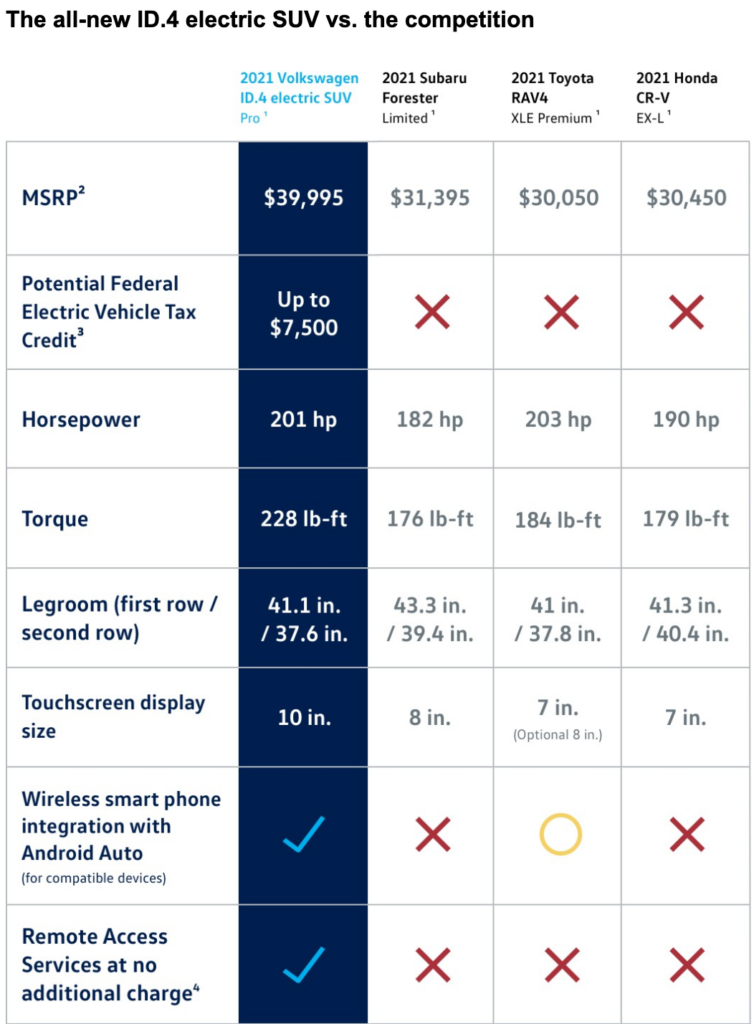
These were just a few quick ideas, but clearly US automakers and dealers have to up their game if they are actually series about selling their EVs and competing against Tesla. Most EVs and the entire EV experience from legacy automakers doesn’t yet match that from Tesla which requires being smarter than the Silicon Valley-based company. Running ads in the local newspaper and hoping people will buy your EV is simply not going to cut it.
Impressions From a 5-Minute Test Drive
Overall the ID.4 is a nice looking crossover, that I personally think is much better looking than the vehicles the VW is comparing it to: the Toyota RAV4, Subaru Forrester, and the Honda CR-V.
The test drive vehicles were the high-end 1st Edition version that has a panoramic glass roof, fake leather seats, taller tires, power seats, and several other upgrades. The exterior included a fancy wrap, which along with the white fake leather interior gave the VW a premium feel.
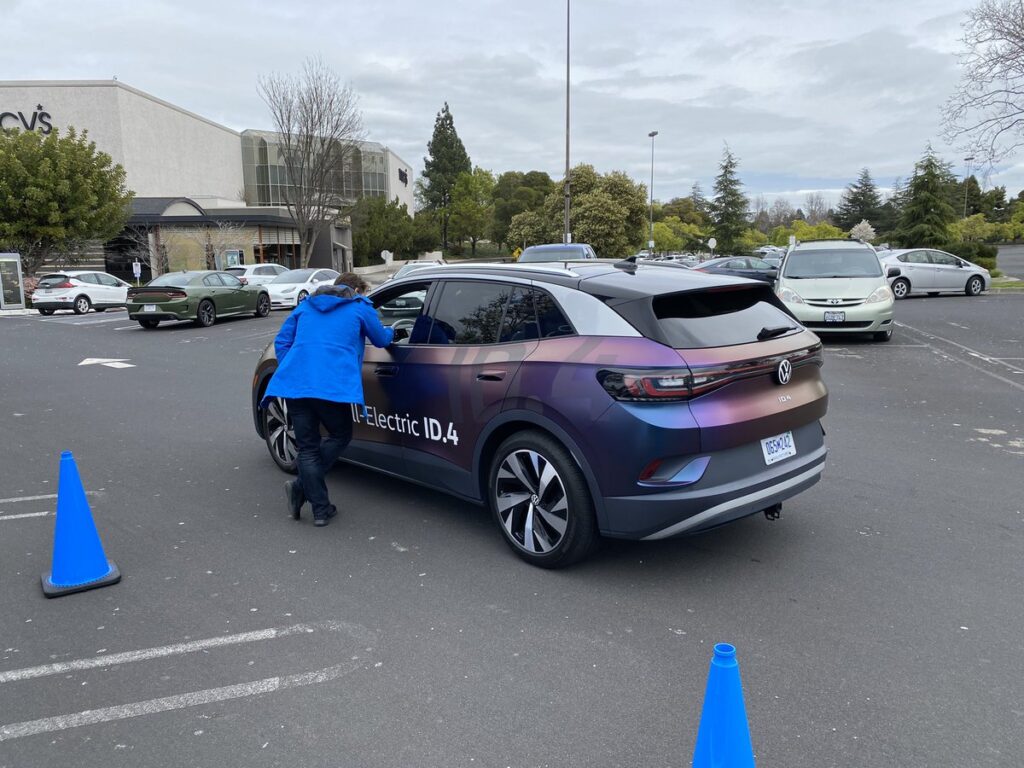
The first thing I noticed when I accelerated toward the freeway on-ramp was that it had a very smooth, controlled sensation. It was nothing like that warp speed, neck-slapping sensation that you get with Teslas and many other EVs. As the ID.4 speed climbing I kept waiting for that boost of speed, but it never kicked in. It almost felt like VW has governor on the motor that’s holding it back from its full potential.
Granted, I’m spoiled having owned two Model Ss, but even the Chevrolet Bolt has a more exhilarating acceleration. Perhaps VW chose this approach intentionally, and granted the ID.4 seemed planty quick, it just was noting special, and a letdown relative to other EVs.
As a crossover, you don’t expect the ID.4 to handle like a sports car but I did notice a bit of body roll as I pushed it in a modest curve as I transitioned from one freeway to the other. It wasn’t bad, in fact it wasn’t that noticeable but I did have the sense that this is not a car to push aggressively on a mountain road. In fairness, however, this is a family car that is priced for average family needs who aren’t looking for nor need a high-performance vehicle.
Lastly, the ID.4 has a regeneration mode called “B” that you select for your driving experience. I chose this driving mode to test the regenerative braking experience, but at least whenever I let off the accelerator, I never actually felt the regenerative braking kick in. If I had more time in the ID.4, I’m sure I would have felt it.
Overall, I thought the VW ID.4 was a very nice, and competent electric vehicle – that seems better than comparable ICE vehicles. But for experienced EV owners who want more performance from their EV, the the ID.4 will fall short. But in the end that is OK as the other market opportunity is actually much larger.

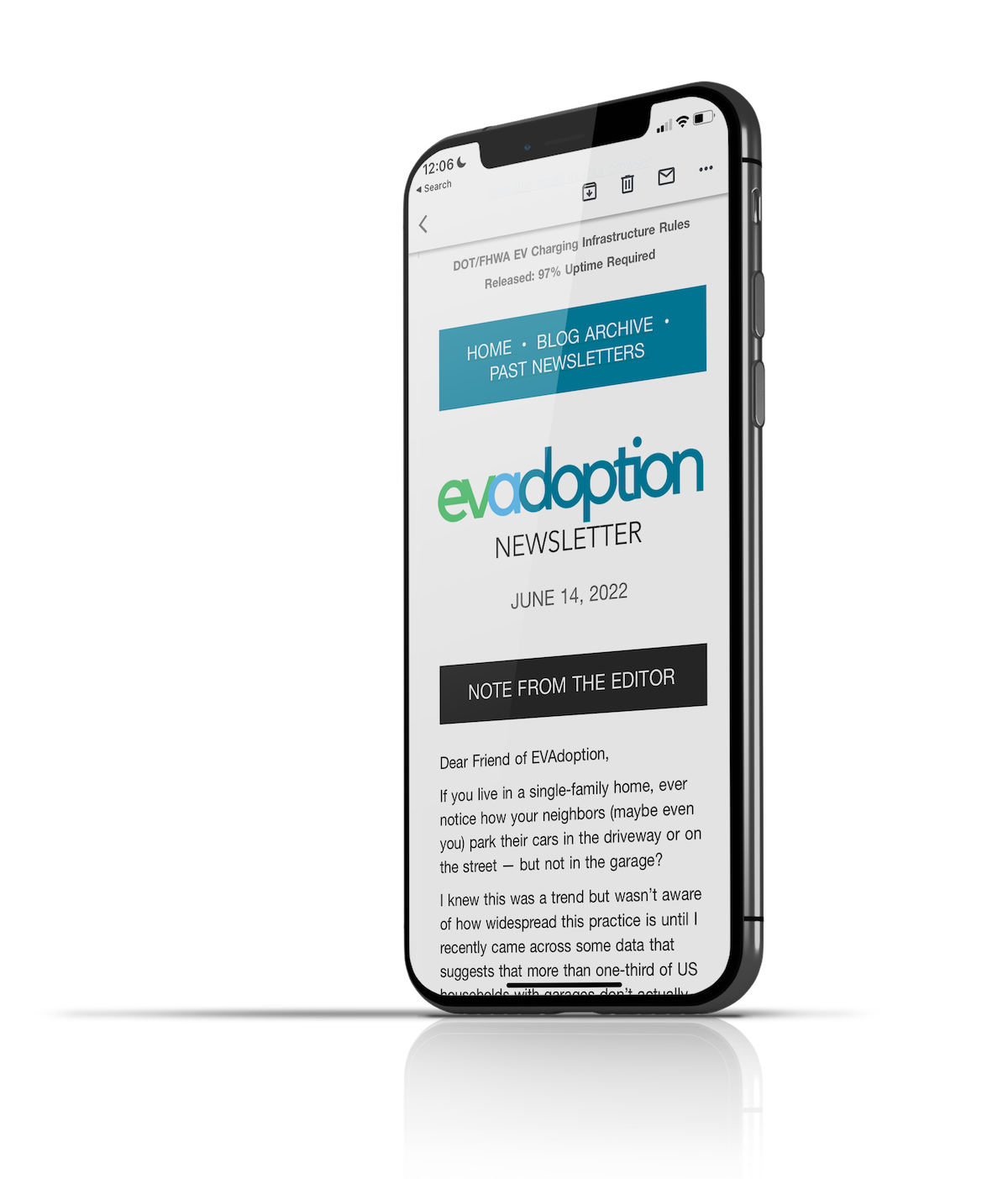
2 Responses
Firstly I agree with your comments, however, a friend & I attended the ID.4 road show in Pleasanton, CA. We had early morning appointments & got to take the same car out for 15-20 minutes twice. Yes we were lucky. I had read a lot of reviews on this car so did not have a lot of questions, but when I did ask a question I received good answers. The regeneration does feel minimal in the B mode, but the brakes are also used for regeneration. VW did this deliberately so it would feel natural for driver coming from a non-EV.
VW are not trying to compete with Tesla. As your article states, the ID.4 is marketed at small SUV & Crossovers owners considering moving to an EV.
Interesting that you got 15-20 minutes … I guess the morning was the better time slot. Did you also have the scripted trips onto 580 to 680 and back to the mall?